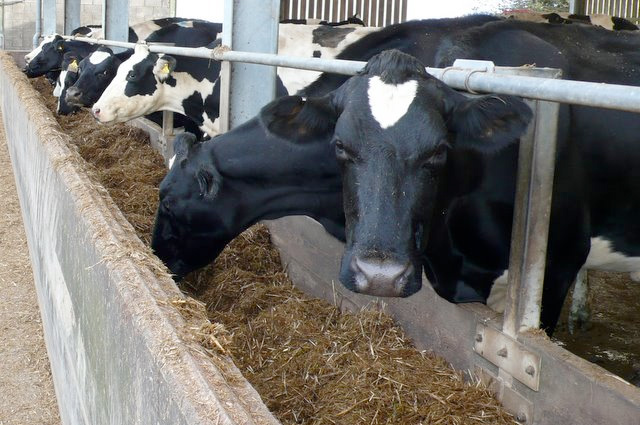
As milk processors begin to cut the price paid to dairy farmers for their milk, farm groups have expressed disappointment that farmers fail to receive their share in strong dairy markets.
World, European and UK dairy commodity prices have slipped back from historic highs but long term demand remains very healthy. However, the reaction from many UK milk buyers has been a cut in farmgate prices – either now or next month.
Yesterday, Müller UK & Ireland Group confirmed a cut to its milk price to 32.00ppl from June 1.
Martin Armstrong, Head of Group Milk Supply for Müller UK & Ireland Group said: “Across Europe, farm-gate milk prices are reducing to reflect market changes. Whilst any correction in the farm-gate price is disappointing, the market is simply responding to higher levels of supply and a weakness in demand for dairy commodities.
The frustration for farmers stems from the long standing problem that the price paid to them for their milk in the UK has been slow to react to the record wholesale markets but as soon as commodity prices start to weaken, processors clamour for price cuts, the National Farmers' Union said today.
NFU Scotland’s Milk Policy Manager, George Jamieson said: “Armed with much better market information, farmers are well aware of the reasons why UK farm gate prices are under pressure, and that after a spell of price security, volatility has raised its head again.
“However, their frustration stems from the long standing problem that, once again, the price paid for milk in the UK has been slow to rise but as soon as commodity prices start to weaken, processors clamour for price cuts.
“Farmers can stand - and even accept the lows - if they were to receive their fair share of the highs. Farmgate prices have been good but should they have been higher or achieved sooner.
“I accept the picture is complicated. Processors and co-ops all have a variety of pricing policies, from pure discretionary pricing to objective formulas and all things between.
“The co-op Arla, has a transparent approach where its member’s price is linked into World and European prices. It was the first to cut, but its link to markets meant its price did rise ahead of some. We expect that most processors will now cut prices – either now or next month – and announcements are coming out daily.
“We remain convinced that prices paid to farmers must be relative to market realities. If processors need to cut quickly, then they need to justify the cuts compared to what they have delivered on price when markets have been strong.
“The NFUS milk price formula, based on wholesale prices of butter, powder, mild cheese and whey, clearly demonstrates that farmgate prices in the UK, even accepting that they have reached historically high values, have not risen as fast or as high as they should have and - at the very least - should not fall as quickly or as far as some processors would like.
“The dairy farming community was admirably patient with the slow rate of price lifts last year, but we are not happy when that patience is not reciprocated. Some, quite correctly, will claim that price rises were due to intense completion for supply and not the market but wholesale prices were high because of globally high dairy demand. This alone should have driven UK farm gate prices as they did elsewhere in Europe and the world.
“Using our formula price as a tracker, it rose from 31p per litre in March 2013 to 37p in August 2013. This was maintained until February 2014 when it fell to 35p and, reflecting weaker wholesale prices, dropped again March to 34ppl.
“Compare that to Defra’s official average farmgate price which stood at 30p in March 2013, only managing to rise to 32p in August and 34p in November, where it has largely remained until now. There remains a significant disparity.
“The facts are that wholesale prices have once again risen faster and higher than farm gate prices, and when the pressure comes on, processors look to justify price cuts based on falling commodity values.
“The lag in price rises and the speed in implementing cuts simply underlines the need for proper pricing mechanisms across the sector and a robust and progressive voluntary code of practice to cover contractual arrangements between a dairy farmer and his milk buyer.
“We have welcomed those processors who have given their suppliers the choice to adopt market-related pricing mechanisms and have genuinely committed to the Code’s aspirations.
“Those who doubt the need for an effective Code of Practice should think again, as processors who have not signed up, with tacit acceptance from their suppliers, can cut with relative impunity. The Code aspires to build trust and transparency into supply chain relationships.
“The Code is under review. Those with polarised and self-interested views need to see the wider picture and constructively engage. The processors who can justify and communicate their pricing policy will ultimately be rewarded with long term commitment from their farmers.”
